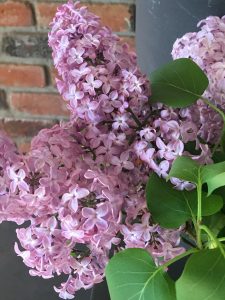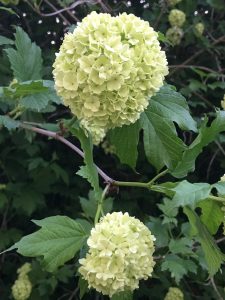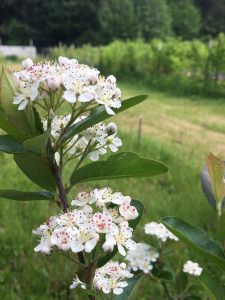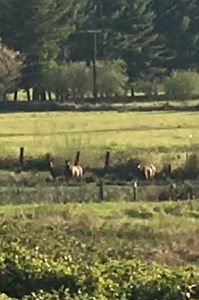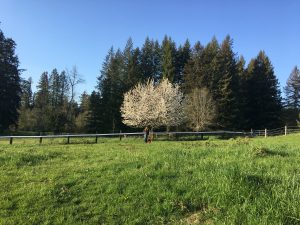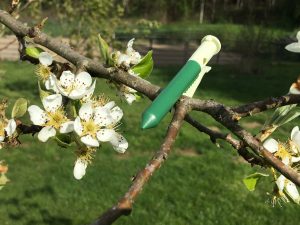https://docs.google.com/document/d/1QQkqUWggx1GYx0T9XLr3VkEH82Pi6Dvi9qrUI5MCcxw/edit
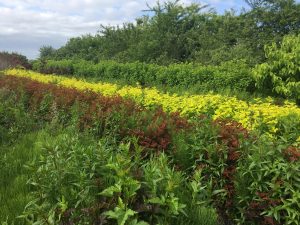
I designed my spring quarter Independent Learning Contract (ILC) to outline and document the steps needed to start a sustainable wholesale cut flower farm business. My project was entitled Growing a Farm: Cultivating a New Farm Business. My learning objectives were to gain hands on experience in farm field cultivation, learn the legal steps required to open a farm business in Washington state, and learn the fundamentals of botany.
The most valuable learning experience for me this quarter was the work I performed as an intern at the organic farm at Evergreen College, and at Jello Mold Farm in Mt. Vernon, Washington. The purpose of my internship at Evergreen was to continue to gain the hands on learning needed to operate a farm. I wanted to expand on the practices introduced last year in the Practice of Organic farming program, such as propagation, field cultivation, irrigation, and harvesting. My field supervisor was Beth Leimbach, assistant manager at the organic farm at Evergreen. Working with Beth one on one was a rewarding experience, she has high expectations and exacting work standards from her twenty plus years working in the small farm and plant industry. A task as simple as watering the seedlings needs to be done correctly to protect them from damage. I learn by doing, and need to perform a task repetitively in order to master it. I feel I have gained the hands on knowledge I was seeking through constant involvement and practice working on the farm. I also had the opportunity to learn how to enter data in the computer program Ag Squared. Last year I shunned this task, Beth pushed me out of my comfort zone and insisted I gain rudimentary computer based crop data skills. I also benefited from having the opportunity to work with and try different tools and materials, such as paper and thrip mulch.
I applied for, and received a week long internship at Jello Mold Farm in Mt. Vernon Washington during the week of May 20th. Working with Diane Szukovathy, one of the founding members of the Seattle Wholesale Growers Market Cooperative was the most valuable learning experience for me this quarter. My business plan is structured around growing woody cut stems and selling them to the Seattle cooperative. Diane and Dennis offered insights and advice for the wholesale market and helped me narrow down my plant selection for my farm. I learned valuable techniques for harvest, post harvesting, and transport of woody cut stems. Part of the internship involved spending a day at the wholesale growers market. Diane introduced me to several growers who generously offered advice for plant selection. I was also allowed to sit in on a meeting with the market manager and a west coast distributor who is interested in partnering with the Seattle market. The business advice, networking opportunities, and hands on experience at Jello Mold aligned perfectly with my learning goals. I was able to move forward with confidence in opening my business after gleaning the advice from experienced farmers in the wholesale floral business.
My final learning objective was to gain a greater understanding of botany. I was not able to enroll in a botany class at SPSCC community college this quarter, instead I opted to study The Great Courses: Plant Science: An Introduction to Botany. By Dr. Catherine Kleier. I completed the twenty four lectures and read the accompanied book, however, I feel the course did not meet my learning expectations. I read Thomas Elpel’s Botany in a Day and Geoff Hodge’s Practical Botany for Gardeners. I opted to make a notebook based on Elpel’s text, Botany in a Day. I collected and identified plants using the pattern method outlined in his book.
I feel I gained new skills and achieved the goals outlined in my individual learning contract, with the exception of a comprehensive understanding of botany. My learning style is hands on, The internships, business research and interviews I completed were activities that can not be learned in a classroom setting. The botany studies were a challenge to learn on my own. I feel I would have gained more working with someone or in a classroom setting. I do plan to take three ethnobotany classes offered this summer quarter at Evergreen. I hope to expand my knowledge in botany and plant taxonomy.
